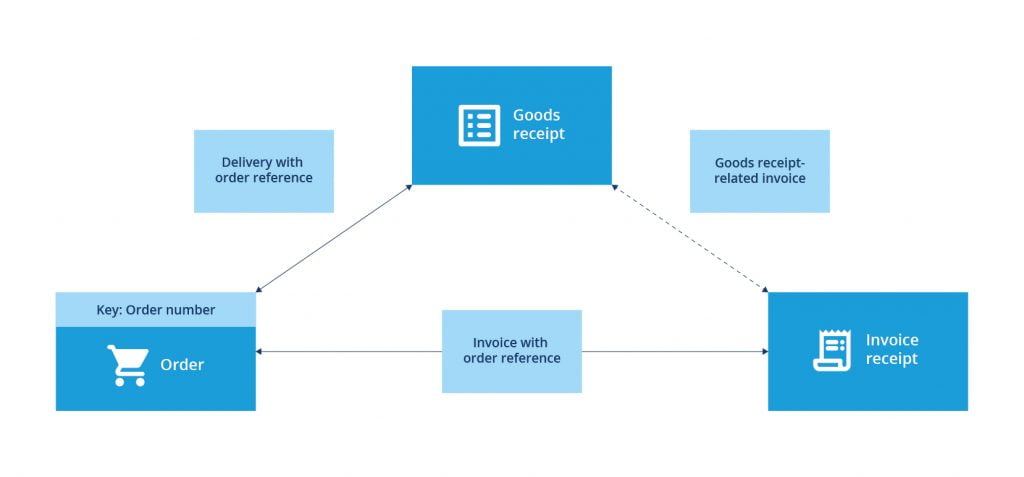Firstly, 3-way matching is the corrective measure in procurement and subsequently in the purchase-to-pay process. Secondly, this three-way matching also provides the basis for automating the P2P process.
How does a three-way match work?
Which criteria are used as the basis for determining matches or discrepancies between the purchase order, delivery and incoming invoice? Three checkpoints for this three-way match are on hand in any properly designed procurement/purchase process.
- The data of the order itself – order quantity: Ideally, an order has been generated from a requisition, so we know what we wanted to procure and what we ordered. The order is the basis for the first checkpoint.
- The data of the delivery – delivery quantity: An order is generally followed by an order confirmation from the supplier. However, this confirmation is only a statement of intent. This means it is preferable to rely on the data in the goods receipt, i.e. on the actual delivery shown on the delivery note, which forms the second checkpoint.
- The invoice data of the incoming invoice – invoice quantity: According to the VAT Act (Section 14), all quantities, totals and values to be paid for a delivery are mandatory details of an invoice in the invoicing process – they form the basis for the third checkpoint in the three-way match.

It is essentially a matter of comparing the order quantity with the delivery quantity and lastly with the invoice quantity. That is the basic concept of the three-way match.
The three-way match in practice
This idea can also be refined in practice, of course. A three-way match can also be made down to the item level. However, this raises the question of practicability. The goal is to have a running business process and not a process that is constantly interrupted by a workflow. To ensure a smooth purchase-to-pay process, it is also advisable to consider and use tolerances and margins for under- and over-deliveries. Appropriate tolerances must especially be taken into account in the case of material deliveries, where prices fluctuate on a daily basis.
For simple invoice processes, this three-way match can also be broken down to a two-way match (in which only the data from the order and the incoming invoice are compared). Conversely, the three-way match can also be expanded, in a five-way match, for example. This way, two additional data checkpoints are included: such as data from the order confirmation and from a manual quality check of the delivered goods during the incoming goods inspection. In larger organizations with multiple delivery points, it is also necessary to clarify which delivery point the goods were delivered to – and whether this was intentional. Even partial deliveries can be checked in a three-way match to make sure they are correct.
It all depends on the requirements of the company itself and the available capabilities of the systems used in the procurement/invoice/purchase-to-pay process. When properly planned and implemented, three-way matching creates transparency and helps to automate the process line.